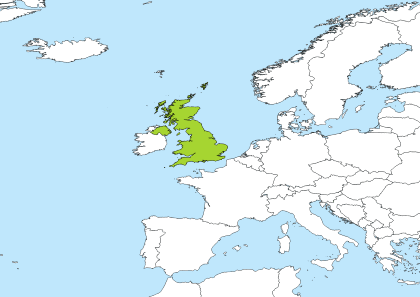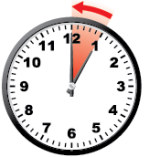BST to CDT Caribbean
Time Difference
Greenwich Mean Time is 5 hours ahead of Cuba Standard Time
8:30 am08:30 in GMT is 3:30 am03:30 in CST
BST to CDT call time
Best time for a conference call or a meeting is between 1pm-6pm in BST which corresponds to 8am-1pm in CDT
8:30 am08:30 Greenwich Mean Time (GMT). Offset UTC 0:00 hours
3:30 am03:30 Cuba Standard Time (CST). Offset UTC -5:00 hours
8:30 am08:30 GMT / 3:30 am03:30 CST
| GMT | CST |
|---|---|
| 12am (midnight) | 7pm |
| 1am | 8pm |
| 2am | 9pm |
| 3am | 10pm |
| 4am | 11pm |
| 5am | 12am (midnight) |
| 6am | 1am |
| 7am | 2am |
| 8am | 3am |
| 9am | 4am |
| 10am | 5am |
| 11am | 6am |
| 12pm (noon) | 7am |
| 1pm | 8am |
| 2pm | 9am |
| 3pm | 10am |
| 4pm | 11am |
| 5pm | 12pm (noon) |
| 6pm | 1pm |
| 7pm | 2pm |
| 8pm | 3pm |
| 9pm | 4pm |
| 10pm | 5pm |
| 11pm | 6pm |
| 0:00 | 19:00 |
| 1:00 | 20:00 |
| 2:00 | 21:00 |
| 3:00 | 22:00 |
| 4:00 | 23:00 |
| 5:00 | 0:00 |
| 6:00 | 1:00 |
| 7:00 | 2:00 |
| 8:00 | 3:00 |
| 9:00 | 4:00 |
| 10:00 | 5:00 |
| 11:00 | 6:00 |
| 12:00 | 7:00 |
| 13:00 | 8:00 |
| 14:00 | 9:00 |
| 15:00 | 10:00 |
| 16:00 | 11:00 |
| 17:00 | 12:00 |
| 18:00 | 13:00 |
| 19:00 | 14:00 |
| 20:00 | 15:00 |
| 21:00 | 16:00 |
| 22:00 | 17:00 |
| 23:00 | 18:00 |
British Summer Time
Offset: BST is 1 hour ahead Greenwich Mean Time (GMT) and is used in Europe
Countries: It is used in following countries: Britain (UK), Guernsey, Isle of Man, Jersey
Principal Cities: The largest city in the BST timezone is London from United Kingdom with population about 7.557 million people. Other major cities in the area are Birmingham, Glasgow, Liverpool, Saint Helier
Greenwich Mean Time (GMT) originally referred to the mean solar time at the Royal Observatory in Greenwich, London. It is now often used to refer to Coordinated Universal Time (UTC) when this is viewed as a time zone, and in casual use for the most parts it is the same. In military GMT is known as Zulu time.Greenwich Mean Time was the same as Universal Time (UT), until the introduction of UTC in 1972 a standard astronomical concept used in many technical fields.

BST representations, usage and related time zones
- +01 - basic short
- +0100 - basic
- +01:00 - extended
- +0100 - sign character (+) followed by a four digit time providing hours (01) and minutes (00) of the offset. Indicates one hour and zero minutes time differences to the east of the zero meridian.
- Alpha - Military abbreviation for BST
- A - short form of 'Alpha'
- Europe/Belfast
- Europe/Guernsey
- Europe/Isle_of_Man
- Europe/Jersey
- Europe/London
- GB
- GB-Eire
- British Summer Time - UTC +1
- Bangladesh Standard Time - UTC +6
- Bougainville Standard Time - UTC +11
- Brasilia Standard Time - UTC -3
- BST - British Summer Time
- CET - Central European Time
- IST - Irish Standard Time
- WEST - Western European Summer Time
- A - Alpha Time Zone
- CET - Central European Time
- MEZ - Mitteleuropäische Zeit
- WAT - West Africa Time
- WST - Western Sahara Summer Time
- BMT - Biel Mean Time
Cuba Daylight Time
Offset: CDT is 4 hours behind Greenwich Mean Time (GMT) and is used in Caribbean
Countries: It is used in following countries: Cuba
Principal Cities: The largest city in the CDT timezone is Havana from Cuba with population about 2.164 million people. Other major cities in the area are Santiago de Cuba, Camaguey, Holguin, Guantanamo
Daylight Saving: Cuba Daylight Time (CDT) is a daylight saving/summer time zone, however during winter some places adjust time for one hour back and observe Cuba Standard Time (CST).
 End: Cuba Daylight Time (CDT) has ended on Sunday, November 3, 2024 at 1:00 am local time and clocks were set one hour back to Sunday, November 3, 2024, 12:00 am local standard time instead. Daylight saving ends annually the on first Sunday of November
End: Cuba Daylight Time (CDT) has ended on Sunday, November 3, 2024 at 1:00 am local time and clocks were set one hour back to Sunday, November 3, 2024, 12:00 am local standard time instead. Daylight saving ends annually the on first Sunday of November
 Start: Cuba Daylight Time (CDT) starts on Sunday, March 9, 2025 at 12:00 am local time and clocks are set one hour forward to Sunday, March 9, 2025, 1:00 am. Daylight saving starts annually the on second Sunday of March
Start: Cuba Daylight Time (CDT) starts on Sunday, March 9, 2025 at 12:00 am local time and clocks are set one hour forward to Sunday, March 9, 2025, 1:00 am. Daylight saving starts annually the on second Sunday of March
CDT representations, usage and related time zones
- -04 - basic short
- -0400 - basic
- -04:00 - extended
- -0400 - sign character (-) followed by a four digit time providing hours (04) and minutes (00) of the offset. Indicates four hour and zero minutes time differences to the west of the zero meridian.
- Quebec - Military abbreviation for CDT
- Q - short form of 'Quebec'
- America/Havana
- Cuba
- Central Daylight Time - UTC -5
- Cuba Daylight Time - UTC -4
- AST - Atlantic Standard Time
- EDT - Eastern Daylight Time
- AMT - Amazon Time
- BOT - Bolivia Time
- CDT - Cuba Daylight Time
- CLT - Chile Standard Time
- FKT - Falkland Island Time
- GYT - Guyana Time
- HLV - Hora Legal de Venezuela
- PYT - Paraguay Time
- Q - Quebec Time Zone
- VET - Venezuelan Standard Time
